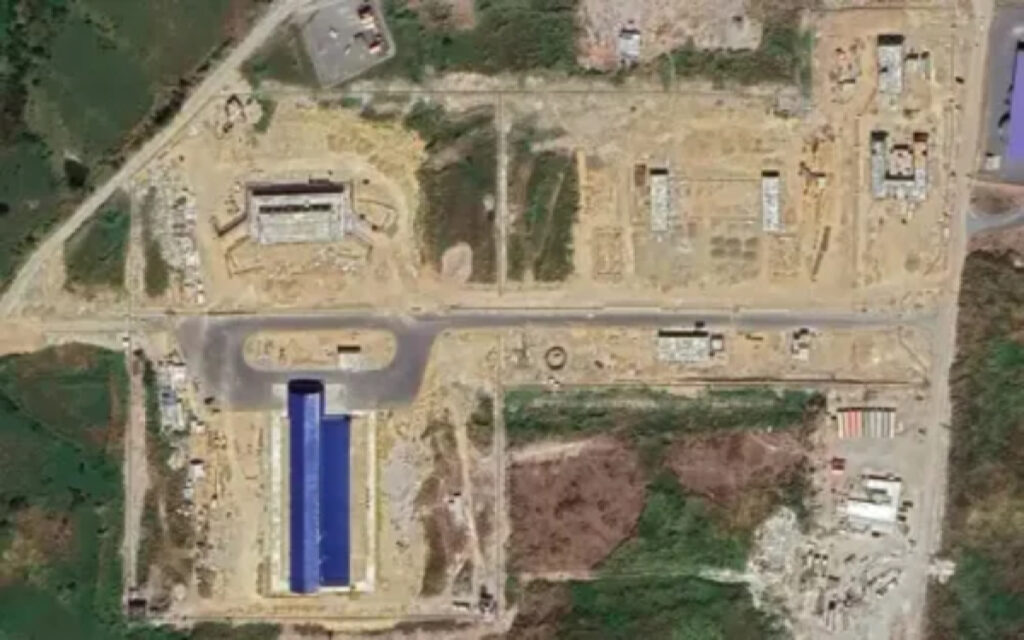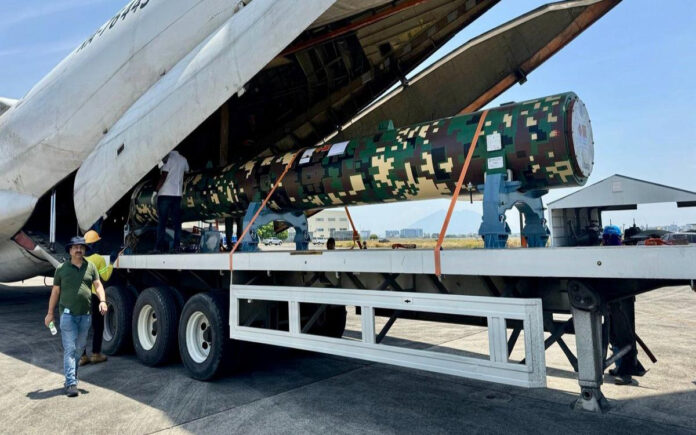Manila: In a strategic initiative to counter China’s growing influence, the Philippines is establishing a base for the BrahMos missile system, aimed at monitoring and deterring the Chinese war fleet in the South China Sea. This development comes amid escalating tensions between the two nations, prompting the Philippines to enhance its defense capabilities by acquiring the BrahMos missile system from India.
Recent satellite imagery has unveiled the construction of a BrahMos missile site in Zambales, located on the western coast of Luzon. This strategic positioning allows the Philippines to closely observe and respond to Chinese warships, aircraft, drones, and submarines. The BrahMos missile, known for its precision and speed, significantly bolsters the Philippines’ ability to protect its maritime borders and address potential threats in the contested waters.

The situation escalated when a Philippine supply ship was struck by a Chinese Coast Guard vessel near the disputed Spratly Islands in the South China Sea. China claimed the Philippine ship had intruded into waters near the Second Thomas Shoal, leading Chinese forces to chase it away. The Spratly Islands are a focal point of tension, with both China and the Philippines asserting territorial claims.
China’s Coast Guard reported the incident on the social media platform WeChat, accusing the Philippine ship of ignoring repeated warnings and approaching the Chinese vessel unprofessionally, resulting in a collision. China placed full responsibility for the incident on the Philippines.
Also Read | Drone Strikes Spark Fires at Russian Fuel Depots
In response, the Philippines reiterated its stance, emphasizing that the Second Thomas Shoal lies within its exclusive economic zone (EEZ), just under 200 nautical miles from its coastline. The Philippines highlighted that international rulings have invalidated China’s expansive claims in the South China Sea. Despite numerous confrontations in recent months near the shoal, the Philippines has maintained a post on the BRP Sierra Madre ship as a symbol of its sovereignty.
Ongoing tensions have led to several conflicts between Chinese and Philippine vessels. Last year, Chinese coast guards deliberately collided with Philippine ships and even deployed water cannons against the Philippine crew, actions that have drawn international condemnation, including from the United States.
Also Read | India’s Monsoon Progresses, Bringing Relief from Heatwave
In response to China’s assertive policies in the South China Sea, the United States has formed a new alliance akin to the Quad, including Australia, Japan, and the Philippines. This coalition aims to counterbalance China’s influence in the region. China, however, has cautioned the Philippines against aligning too closely with the U.S., suggesting that the Philippines could become a pawn in a larger geopolitical struggle, similar to the ongoing conflict between Russia and Ukraine.
As the Philippines continues to strengthen its defense posture with the BrahMos missile system and alliances with other regional powers, the strategic dynamics in the South China Sea remain tense. The establishment of the missile base in Zambales represents a significant step in the Philippines’ efforts to protect its territorial integrity and assert its rights in the face of increasing Chinese assertiveness.



